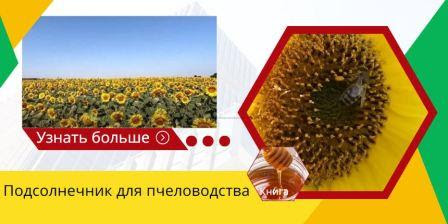Snowberry white as a honey plant
The white snowberry is an excellent honey plant, which is increasingly used in landscaping settlements, and is used in forest protection forest plantations. The snowberry honey plant is able to withstand difficult climatic conditions and gas pollution. The snowberry can become the basis for urban beekeeping, as well as for stationary apiaries.Content
- Description of the honey plant snowberry white
- Snowberry honey plant
- Snowberry as a pollen
- Another use for the snowberry
...
.
...
Description of the honey plant snowberry white
Honey plant white snowberry - Latin name Symphoricarpos albus (L.) Blake.
What does a
snowman look like? Honey plant snowberry is a white deciduous shrub from the
honeysuckle family, which reaches a height of 1-
The honey plant white snowberry forms many bare four-ribbed shoots collected in a dense crown.
The leaves
of the white snowberry are simple, opposite, ovoid or oval in shape, entire,
coarsely notched on the root shoots, up to 2-
The flowers
of the white snowberry are small (
The flowers of the white snowberry are collected in dense racemose inflorescences in the axils of the leaves.
Snowberry white honey plant blooms for a long time and plentifully, from May to September.
The fruits
of the snowberry are white, spherical in shape, up to
The snowberry honey plant is distinguished by high winter hardiness, heat resistance, unpretentiousness to soils, the shrub tolerates shearing well. The snowberry absolutely does not suffer with a high degree of air pollution.
Snowberry honey plant withstands moderately acidic and moderately alkaline soils and is somewhat tolerant of salts. The snowberry grows well on soils containing limestone and grows poorly on soils containing granite inclusions. The snowberry grows well in partial shade, but prefers to grow in more open spaces.
How does the snowberry reproduce? The snowberry is propagated as a honey plant with the help of layering, cuttings, seeds and dividing the bush.
Snowberry honey plant is often planted in groups in parks, squares, boulevards, gardens, along roads, in apiaries.
White snowberry honey plant has phytoncidal activity. Volatile phytoncides of the snowberry have only protistocidal activity during the summer-autumn period.
White snowberry honey plant is used as an ornamental plant, mainly in hedges, but it is perfectly used in single plantings. Snowberry white is used in forest protection plantations, placing bushes on slopes to prevent weathering and slipping of the soil.
Snowberry honey plant
The snowberry honey plant belongs to the late honey plants, the best for bees. The snowberry blooms like a honey plant from June to the end of September. The snowberry honey plant abundantly secretes nectar and the flowers of the snowberry are well visited by bees during the entire flowering period. The snowberry, as a honey plant, has the ability to secrete nectar even under adverse weather conditions (during cold snaps, with light rain).
The honey productivity of the snowberry is high and reaches 400 kg/ha with continuous plantings.
Each snowberry flower produces 8-10 mg of nectar per day, the sugar content of the nectar is 27-30%, sometimes the sugar content of the nectar reaches up to 50%. The bees work on the snowberry even in the evening.
Good quality snowberry honey, lemon-yellow honey.
Snowberry as a pollen
The pollen
grains of the snowberry are three-furrow-orovye or four-furrow-orovye, have a
spherical-flattened shape. The length of the polar axis is 39.1-40.8 microns,
the equatorial diameter is 42.5-44.2 microns. Rounded-triangular in outline
from the pole, broadly elliptical from the equator. The furrows are slit-like,
short, have even edges, have pointed or blunt ends, the length of the furrows
is not more than 20 microns. Horas oval, equatorially elongated, 8.5-10 µm
wide, 14-15 µm long; mem- brane of furrows and or- ganis is granular. The width
of the mesocolpium in three-furrowed ora grains is 34-40 µm, in four-furrowed
ora grains it is 25.5-27.2 µm. The thickness of the exine in the center of the
mesocolpium reaches 1.2–2 µm, near the furrows it reaches 2–3 µm due to the
thickening of the rod layer. The underlying layer thickens to 1.2 µm. The rods
are thin, straight, densely spaced, the underlying and cover layers are thin. The
texture is spotty. The color of snowberry pollen is yellow.
Another use for the snowberry
The use of
white snowberry honey plant as a medicinal plant has been used for a very long
time. Currently in folk medicine, decoctions and weldings from the snowberry
are used in the treatment of tuberculosis, stomach ulcers, wounds and ulcers of
various etiologies.


Комментариев нет:
Отправить комментарий